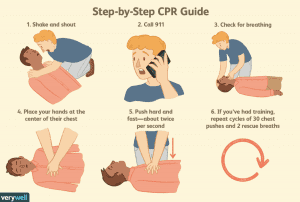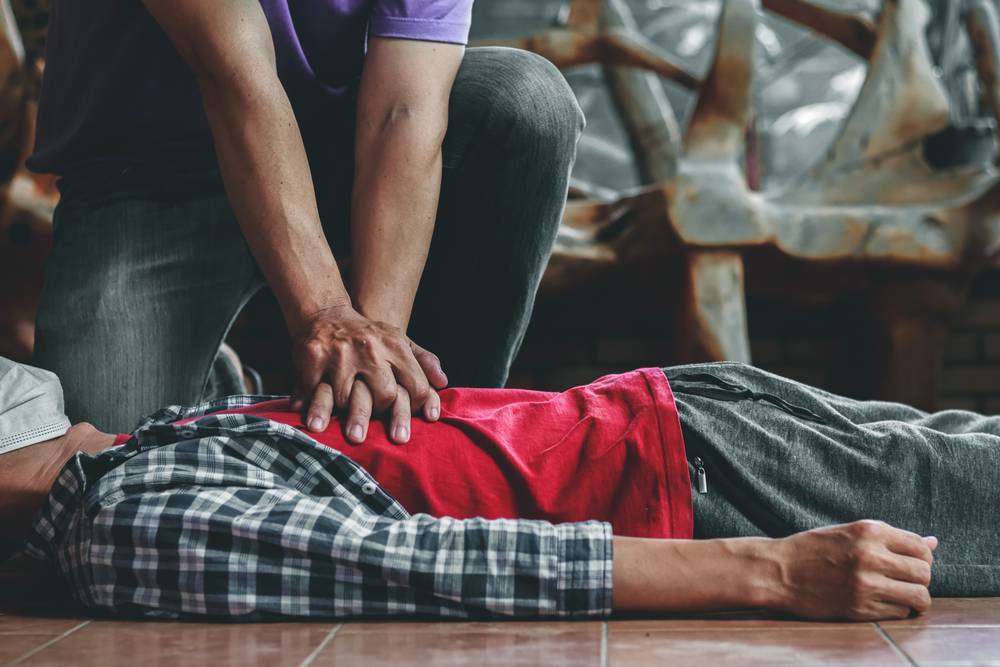Cardiac arrest refers to a condition when the heart suddenly and unexpectedly stops pumping. Out-of-hospital cardiac arrest (OHCA) is a major public health challenge, with an average global incidence among adults of 55 OHCAs per 100,000 person-years. In the US, there are more than 356,000 OHCA annually, with 90% of them dying within a few minutes before the ambulance could possibly arrive.
The incidence of cardiac arrest increase with age, with the majority, happening to people aged 60 years or older. Current data shows that the age group 0-44 years included 60% of the total population and 10% of cardiac arrests. In the United States, about 2000 seemingly young healthy people under the age of 25 die of cardiac arrest each year.
What are the signs of cardiac arrest?
During a cardiac arrest episode, the patient’s heart usually stops pumping out of a sudden, resulting in immediate loss of consciousness, cessation of breathing or abnormal breathing, and absence of a pulse. Many people won’t notice any warning signs prior to such attacks, but occasionally there might be warning signs which can be picked up by patients up to days earlier:
- Chest pain or discomfort, especially during exercise
- Shortness of breath
- Dizziness
- Headache
- Sudden palpitations or rapid heartbeat
- Nausea and vomiting
What can bystanders do?
There is a lot you can do. If there is more than one bystander, there are several things that should be done simultaneously by different people to maximize the chance of survival:
- Call emergency services: describe the situation and ask for an ambulance.
- Look for an automated external defibrillator (AED): many public venues like schools, train stations, and supermarkets are equipped with AED which can analyse a patient’s heart rhythms and deliver an electric shock if necessary. Follow simple instructions on the box to paste 2 electrode pads onto the patient’s chest.
- Perform cardiopulmonary resuscitation (CPR): this is best to be performed by someone who is trained to perform CPR. If not trained, ask the emergency service dispatcher for instructions. Usually, it’s performed by placing both of your hands at the centre of the patient’s chest and pushing firmly about twice per second downwards. For every 30 chest compression, give 2 rescue breaths. Repeat the cycle till the ambulance arrives.

What are the causes of cardiac arrest?
The most common cause of cardiac arrest is cardiac arrhythmia – an irregular heartbeat. There are more than a dozen different subtypes of arrhythmia, each with its unique diagnostic features. Luckily, not all of them induce cardiac arrest on a regular basis. Common causes of arrhythmia include:
- Coronary artery disease or heart attack: the most common cause of sudden cardiac arrest for people aged 60 years or older.
- Congenital heart defects: common in early-onset sudden cardiac arrest.
- Electrolyte imbalances
- Medications: always check with your doctor about the risk of medication if you have a known diagnosis of arrhythmia
- Alcohol or drug abuse: especially common in young people with sudden cardiac arrest
- Inherited conditions: such as long QT syndrome, Brugada syndrome etc. Common in early-onset sudden cardiac arrest.
What are the treatment options for cardiac arrest?
Unfortunately, most people with OHCA wouldn’t be able to survive till emergency services arrive on the scene. CPR and the use of AED machines are the only possible way to save lives. If the patient has survived the initial phase, treatment would become available to prevent further attacks.
Usually, doctors would try to identify the underlying cause of arrhythmia and target the treatment. Offending medication will be stopped, and electrolyte imbalances will be corrected. If patients have inherited heart rhythm issues, a permanent defibrillator or pacemaker can be implanted into the heart. So next time when they have an acute attack, the device can send shockwaves to correct the rhythm almost instantly. For patients with a congenital heart defect, surgical options can be explored to correct the defect permanently.
Someone close to me passed away due to cardiac arrest, what can I do?
First, we’re sorry for your loss. Losing someone close to you can be incredibly difficult, and it’s important to take the time to grieve and process your emotions. Here are a few things you can do:
- Allow yourself to grieve: There is no right or wrong way to grieve. Allow yourself to feel the emotions that come up and take the time you need to mourn the loss. Remember, there is absolutely nothing wrong with grieving, it’s part of a healthy process of recovering from an emotional challenge event.
- Seek support: Reach out to family and friends for support. Talking to others who are going through a similar experience can be helpful.
- Consider counselling: If you’re struggling to cope with the loss, consider speaking to a counsellor or therapist. They can provide support and guidance through the grieving process.
- Take care of yourself: It’s important to take care of your physical and emotional health during this time. Get enough sleep, eat healthy foods, and engage in activities that bring you comfort and joy.
- Advise their family for a physical check-up: as mentioned above, some arrhythmia can be an inherited condition, and an early diagnosis can definitely help prevent future episodes of cardiac arrest.

